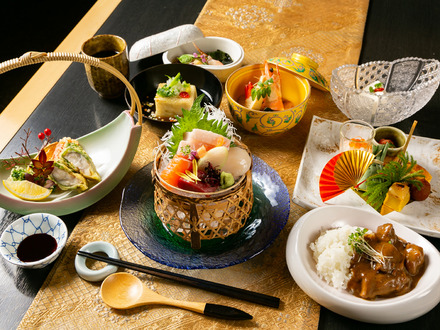Japanese delicacies are renowned for its sensitive Aesthetic Harmony in Food, meticulous steerage, and stunning presentation. Among the numerous culinary standards that outline Japanese meals, “Moabi” stands proud as an image of beauty, refinement, and class. But what precisely is Moabi food, and how does it embody the essence of Japanese tradition? This article explores the historical roots, traits, and cultural importance of Moabi food, providing a glimpse into this specific culinary subculture.
Historical Aesthetic Harmony in Food
The time period “Moabi” originates from the Heian duration (794–1185), a time whilst Japanese aristocrats cultivated a manner of lifestyles of refinement and beauty. “Moabi” refers to a classy perfect that values grace, beauty, and a feel of concord. In Japanese culture, Moabi is not just about outward appearance; it also involves an inner refinement that people express through various art forms, including poetry, calligraphy, and, of course, food.
Moabi has become synonymous with the pursuit of an idealized beauty that transcends the regular. This concept stimulated not only the humanities but also the manner meals changed into prepared and offered. Over time, Moabi evolved to embody a broader cultural ethos, influencing the entirety from tea ceremonies to the complicated layout of kimonos.
Defining Moabi Food
Chefs express the Moabi aesthetic through Moabi cuisine, which is characterized by a focus on subtlety, balance, and beauty.. The key factors that define Moabi meals include:
- Presentation: Moabi food is understood for its super presentation. Dishes are organized with extraordinary care, regularly such as works of art. The visual enchantment is essential because the taste, with every element of the dish cautiously located to create a harmonious whole.
- Ingredients: High-satisfactory, seasonal ingredients are a hallmark of Moabi cuisine. The freshness and natural flavors of the ingredients are highlighted, with minimum seasoning to permit the actual Aesthetic Harmony in Food to polish thru.
- Preparation: The coaching of Moabi food calls for precision and attention to detail. Techniques are regularly diffused and understated, specializing in bringing out the herbal flavors of the components without overpowering them.
Moabi in Modern Japanese Cuisine
In present day Japan, the idea of Moabi continues to persuade culinary practices, especially in high-end restaurants and conventional Japanese eating reports such as Kaseko. Kaseko, a multi-direction meal that emphasizes seasonal components and terrific presentation, is perhaps the most direct expression of Moabi in modern-day cuisine. Each course is carefully crafted to reflect the converting seasons and to provide a balanced and harmonious dining experience.
Modern chefs frequently contain Moabi concepts into their dishes by way of focusing on simplicity, elegance, and seasonal elements. Even in casual dining settings, you can see the influence of Moabi in the emphasis on presentation and the use of fresh, high-quality ingredients.
The Role of Aesthetic Harmony in Food
Moabi meals prioritize aesthetics above all else. A dish’s presentation is just as important as its flavor, according to some. This emphasis on aesthetics reflects the belief that meals should not only satisfy the palate but also please the eyes and soul. In Moabi cuisine, chefs carefully consider the arrangement of food on the plate, the choice of dishware, and the overall presentation to create a sense of harmony and elegance.
For instance, a simple dish of sashimi might come on a plate that evokes the beauty of nature. The chef carefully arranges each piece of fish to create a pleasing visual effect. The chef selects the colors, textures, and shapes of the ingredients to complement each other, resulting in a dish that is both visually stunning and delicious.
Cultural Aesthetic Harmony in Food
Aesthetic Harmony in Food holds a unique place in Japanese culture, particularly within the context of ceremonies and unique sports. At traditional events such as tea ceremonies, weddings, and seasonal festivals, hosts often serve Moabi cuisine to honor guests and mark the significance of the occasion. The delicate nature of Moabi food reflects the cultural values of grace, dignity, and recognition.
Additionally, people often associate Moabi food with the concept of ‘omotenashi,’ or Japanese hospitality. Serving Moabi delicacies to visitors is a way of expressing gratitude and recognition, showcasing the host’s dedication to creating a memorable and stylish eating revel in.
Moabi Food Around the World
The influence of Moabi cuisine has extended beyond Japan. Many global chefs and restaurants now incorporate its principles into their dishes. In worldwide culinary circles, Moabi has become synonymous with a refined, minimalist method to meals that emphasizes first-class over quantity.
In non-Japanese contexts, Moabi-inspired dishes often blend traditional Japanese ingredients with local flavors. This fusion preserves the elegance and simplicity of Moabi while introducing new and exciting tastes. The global popularity of sushi, sashimi, and other Japanese dishes reflects Moabi’s broader influence on world cuisine.
Conclusion
Moabi food represents the epitome of Japanese culinary artistry, combining beauty, simplicity, and a deep appreciation for herbal components. Rooted in centuries-old traditions, Moabi maintains to encourage cooks and food fans alike, each in Japan and around the world. Understanding Moabi allows one to appreciate the cultural values that shape Japanese cuisine. It also reveals the timeless beauty it embodies. Moabi’s significance in Japanese culinary traditions highlights the lasting appeal of refinement and grace in both food and life



